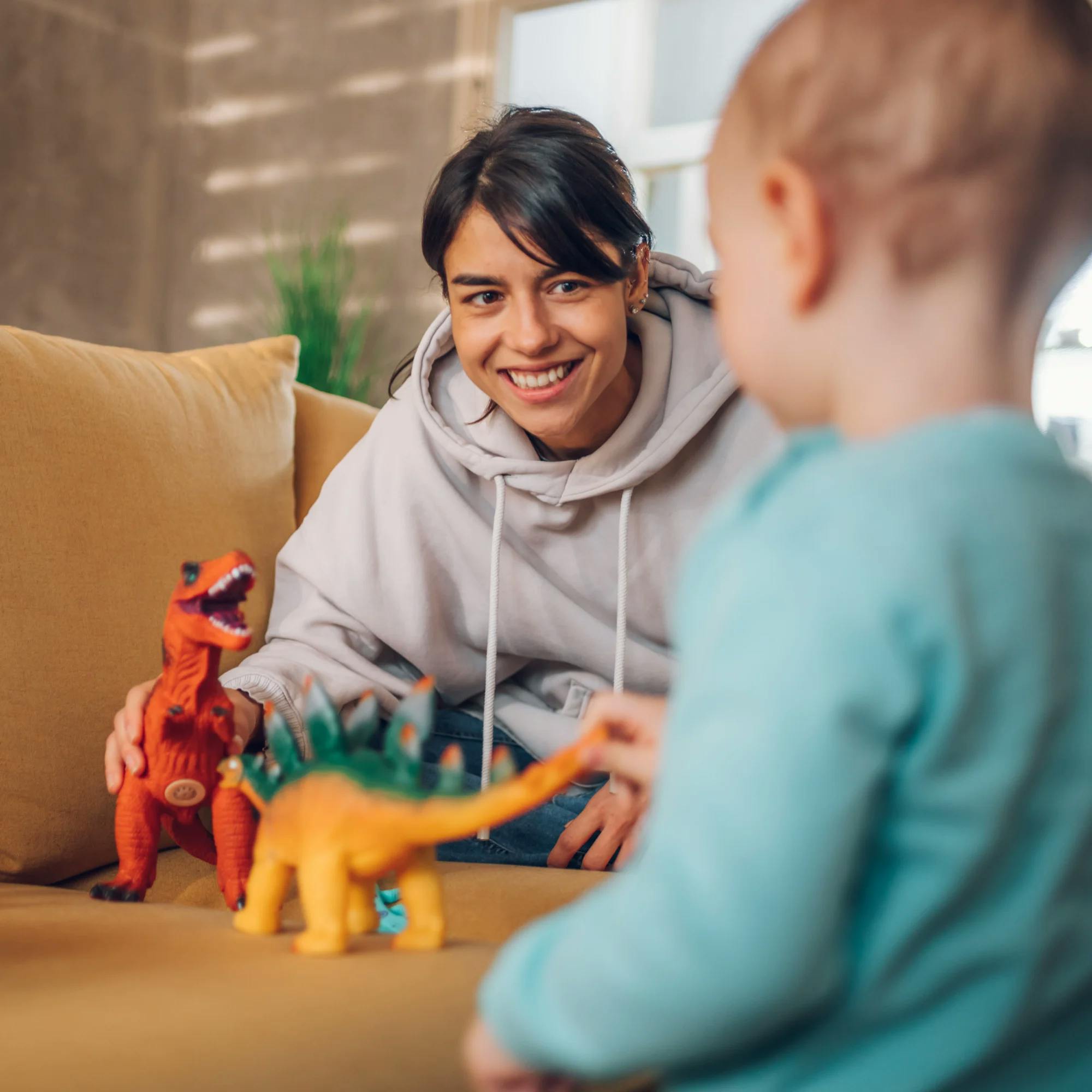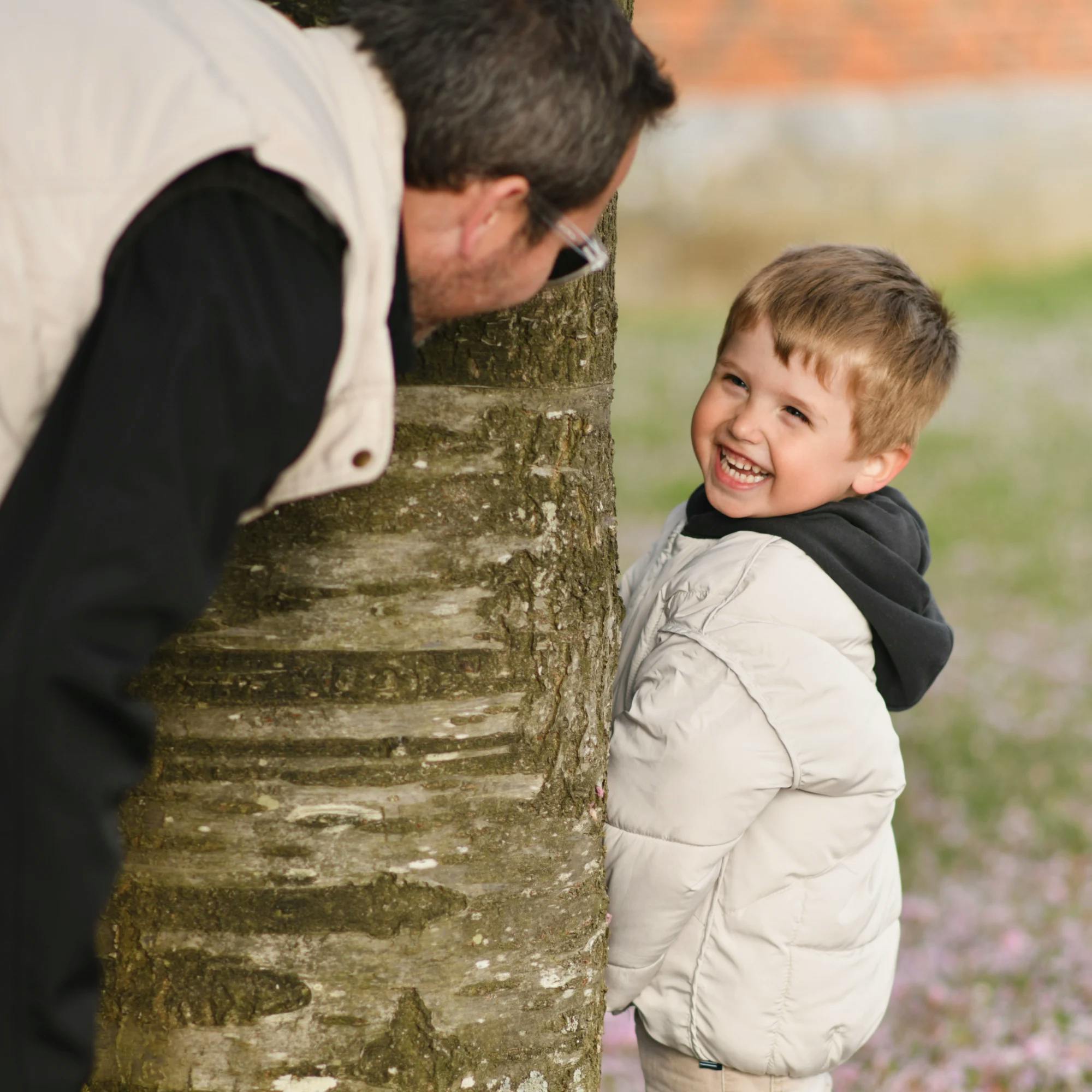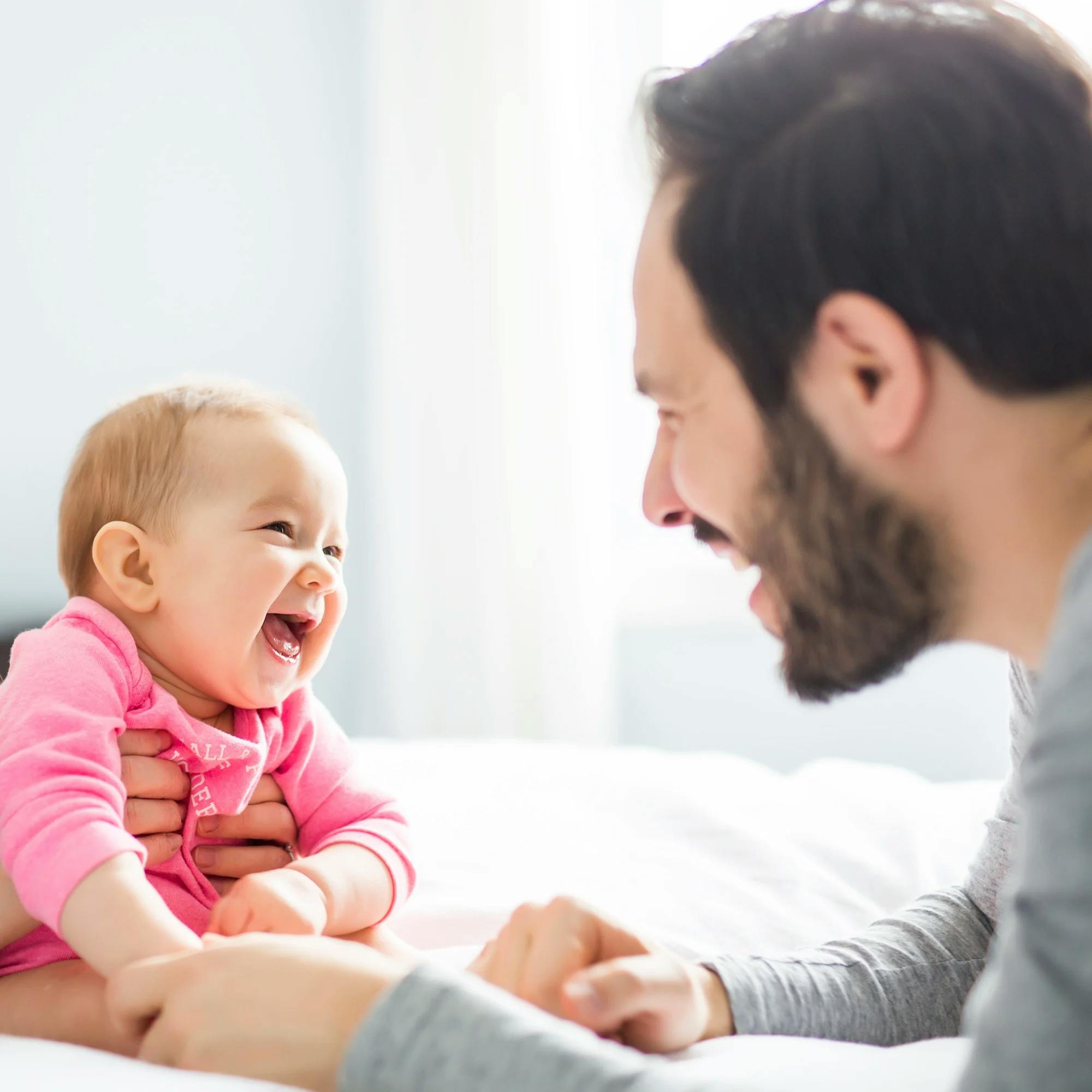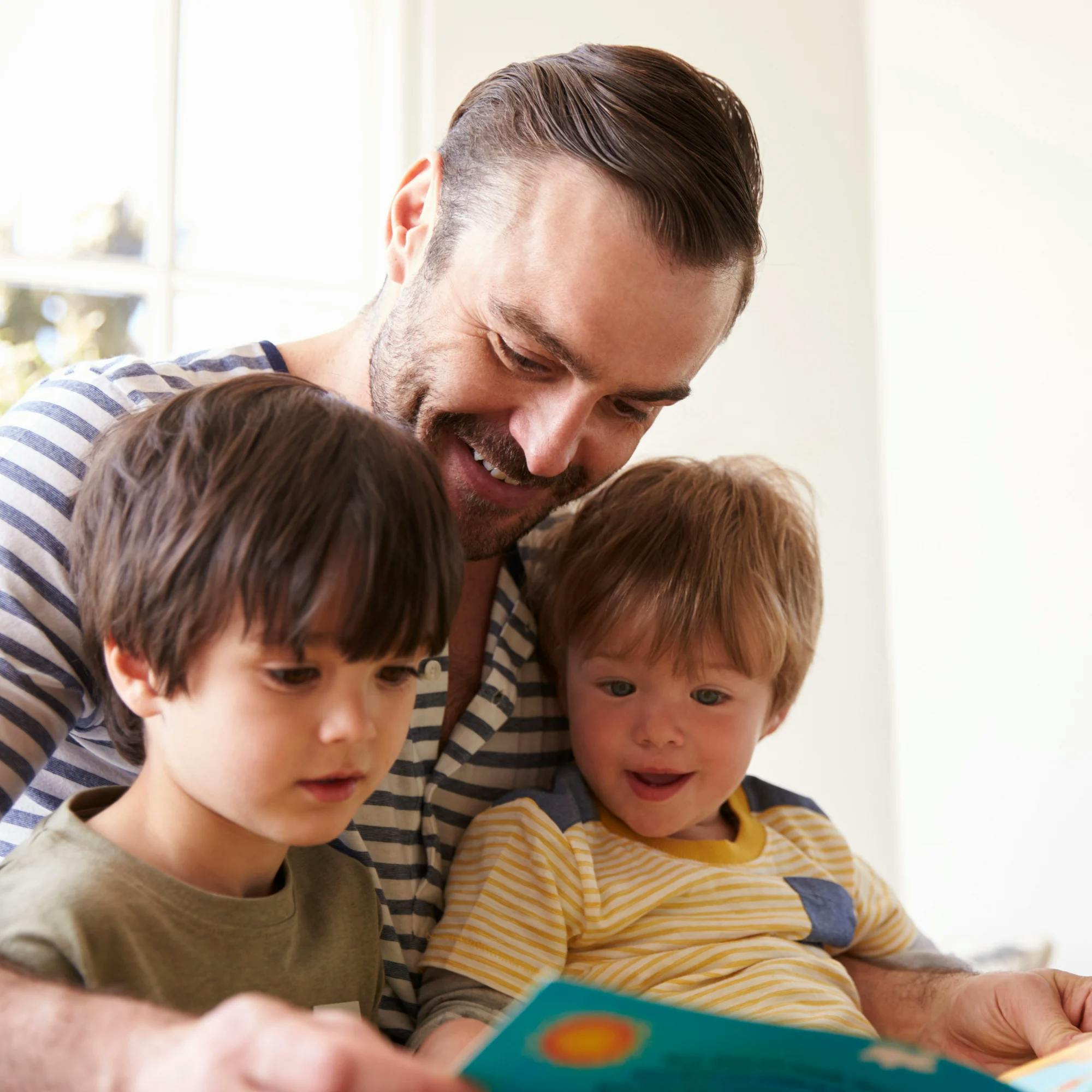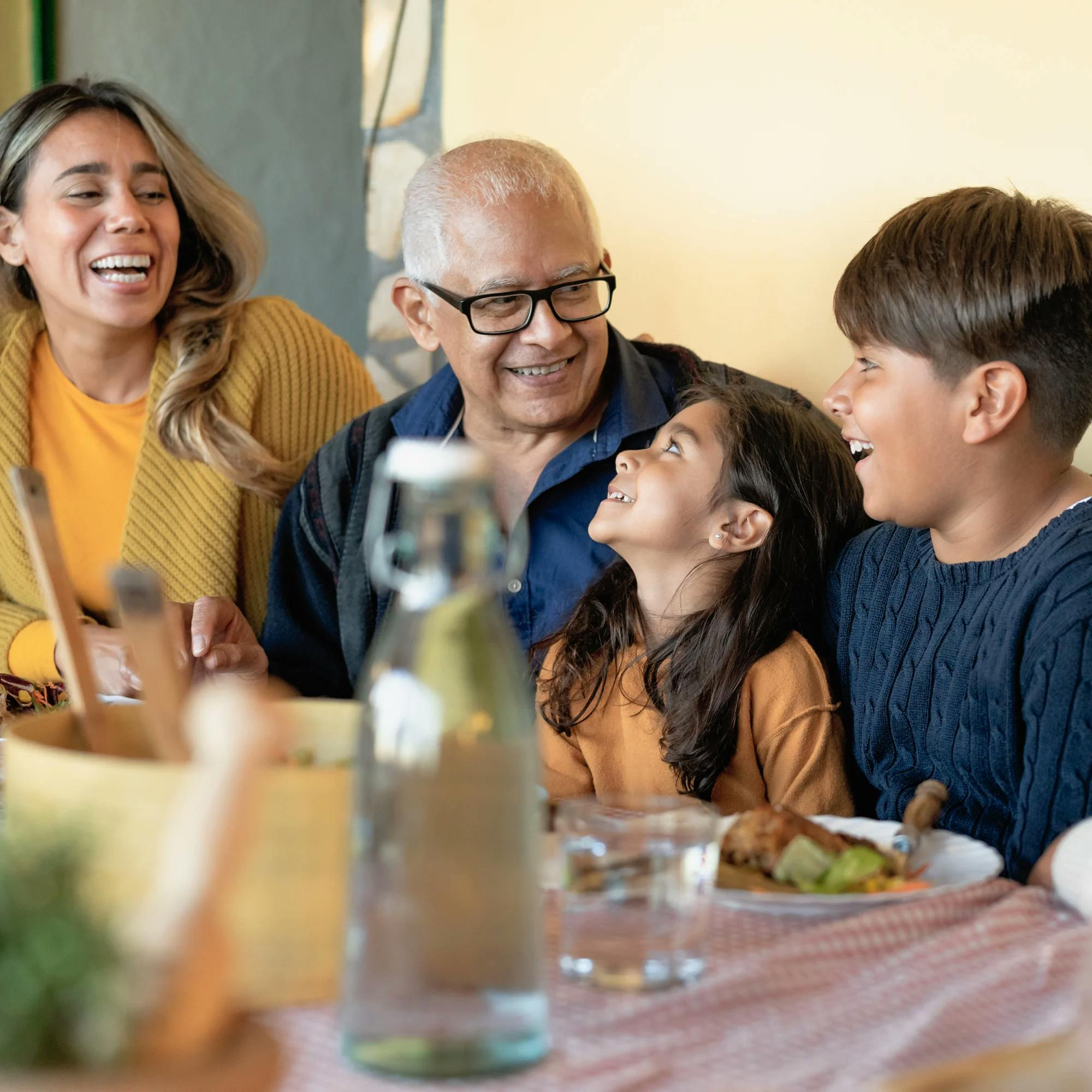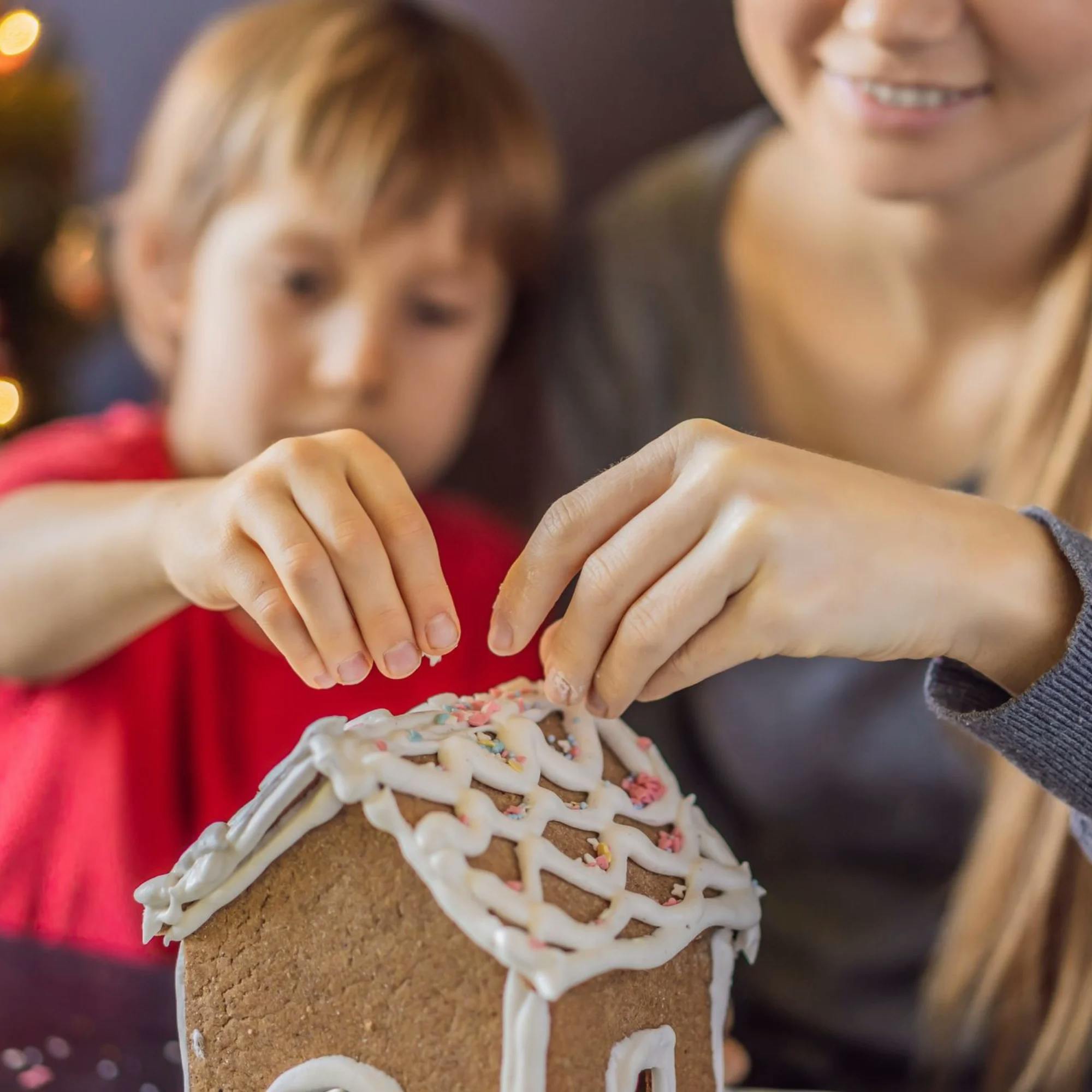Looking for the best toys to help your child learn to talk? Speech therapists recommend these toys to boost speech development while keeping playtime fun!
When the holiday season rolls around, many caregivers want to know what kinds of toys support early language skills in toddlers. The truth is, the best toys for speech development don’t need to be fancy or expensive. They just need to encourage connection, play, and lots of chances to practice new words.
In this updated 2025 guide, we’ve rounded up our favorite speech therapist-approved toys to help toddlers learn to talk, including pretend-play toys, books, flashcards, and more. Each one creates natural opportunities for your child to build vocabulary, imitation skills, and early communication through simple, everyday play.
How does play help with speech and language development in babies and toddlers?
It’s easy to think of playing as just, well, playing. But it’s hugely important for your child's development! Play helps children learn to communicate in several ways:
Interaction: Playing often involves a back-and-forth exchange, just like a conversation. This helps toddlers learn to talk and build early language skills.
Cause and effect: Playing helps children learn about cause and effect. Knock over the blocks and they fall. Press a button and you hear a noise. Early language works the same way: a toddler says a word, then they get what they requested in return.
Attention, turn-taking, and following directions: Playing helps toddlers develop joint attention, or how to focus on the same thing as another person. It also teaches them to take turns and follow directions. All of these skills are key building blocks for communication.
Making noises and using words: Many toys encourage toddlers to vocalize. Learning to imitate sounds like “vroom!” or “meow!” is an important step toward learning to talk and developing speech. As children get older, pretend play encourages them to use words as they act out imaginary scenes.
If you’re making a toy list this holiday season (or just wondering how to get the most out of toys you already have), read on for our top recommended toys to help toddlers learn to talk!

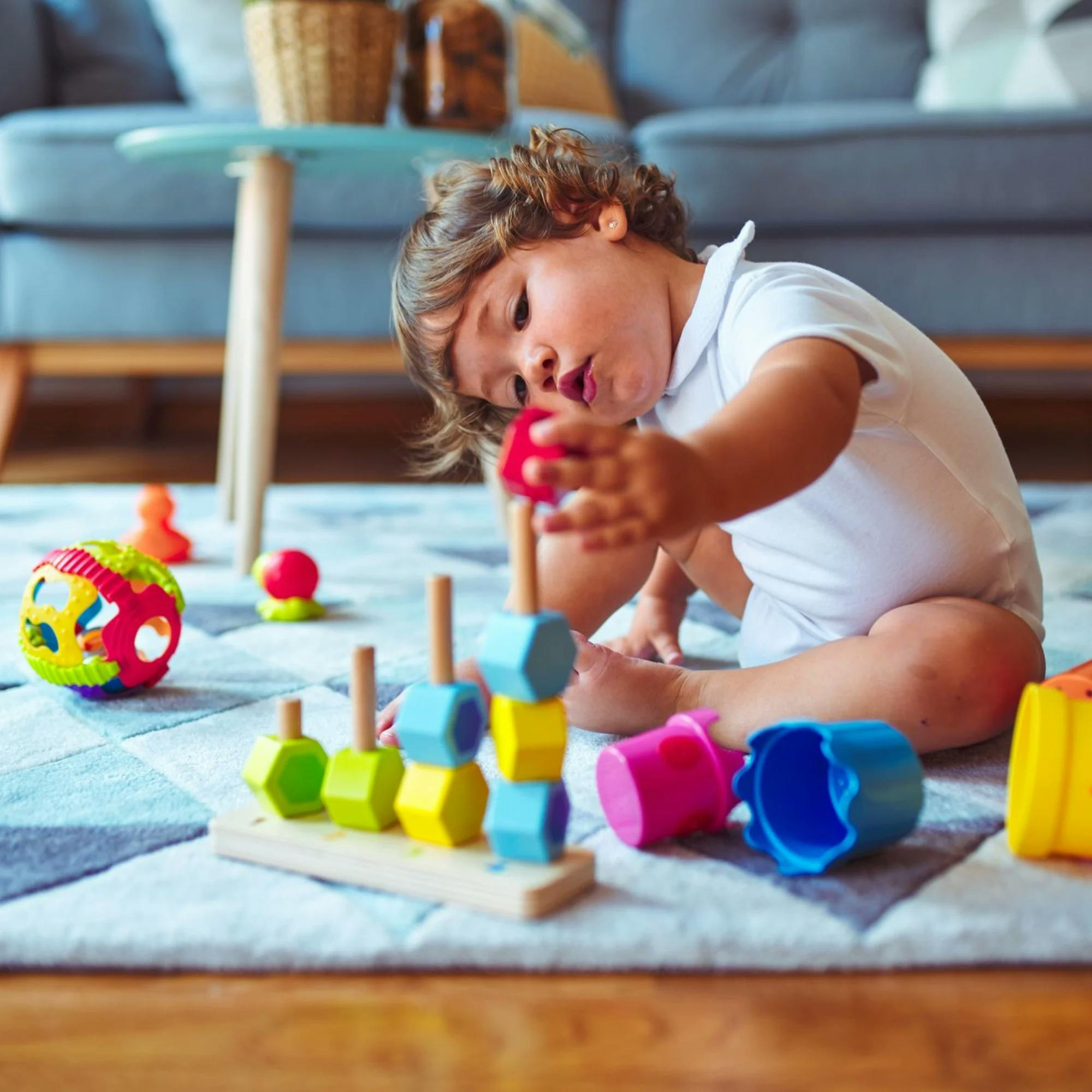
Fun games and flashcards for speech development
Talking flashcards Many families we work with love talking flashcards because they give toddlers lots of chances to practice common words, which is a key step in early speech development.
Our speech therapists suggest that parents and caregivers sort cards by words that are functional and meaningful for their child. For example, if your child loves strawberries and apples, keep those cards in a separate pile. Kids can use the cards to communicate what they want to eat or simply practice saying the words themselves. These flashcards are a simple, fun way to support language skills and help toddlers learn to talk. Toddler Scavenger Hunt Card Game This game is another great choice for promoting speech development and early language skills. Children can work on building vocabulary, following directions, improving attention, and practicing turn-taking. Games like this make practicing speech feel fun, playful, and natural, which is especially helpful for toddlers who are learning to talk.

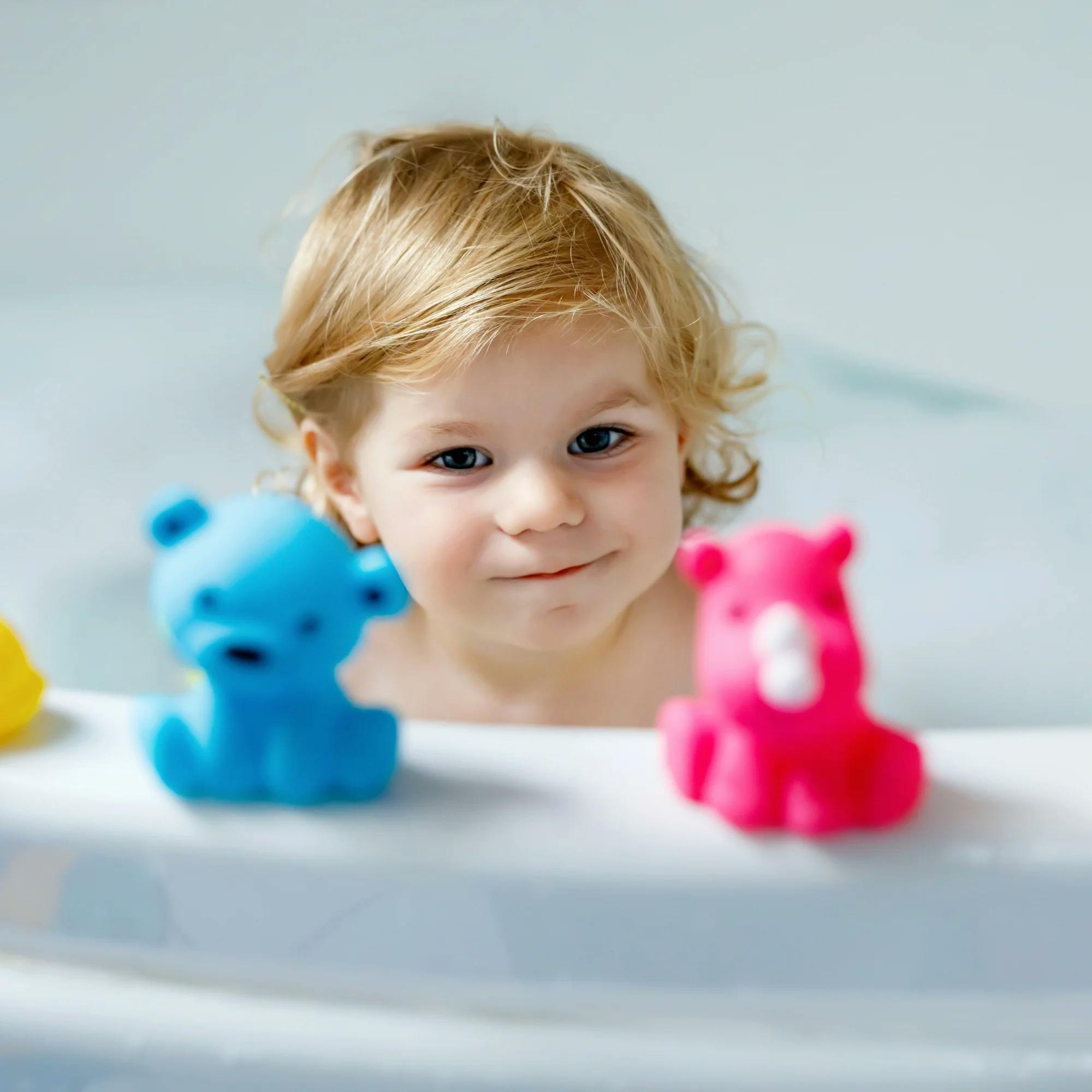
Pretend play toys that help toddlers talk
Color-Your-Own Gingerbread House Many toddlers love playing with boxes, and this life-size gingerbread house takes pretend play to the next level! It’s perfect for encouraging early speech development and helping toddlers learn to talk. You can introduce words like in, out, and above, as well as words related to parts of the house. Coloring and decorating the house also supports fine motor skills, making it a playful way to combine language and motor learning. B. Toys Toy Vet Kit Taking care of animals is a favorite pretend play activity for many children. This toy vet kit adds an element of surprise as kids open doors to find animals or even hide small toys inside. It’s a go-to toy for lots of speech therapists to use in sessions!
Pretend play with the vet kit helps toddlers practice core words and concepts like in, out, open, and close, while also supporting language growth and communication skills.

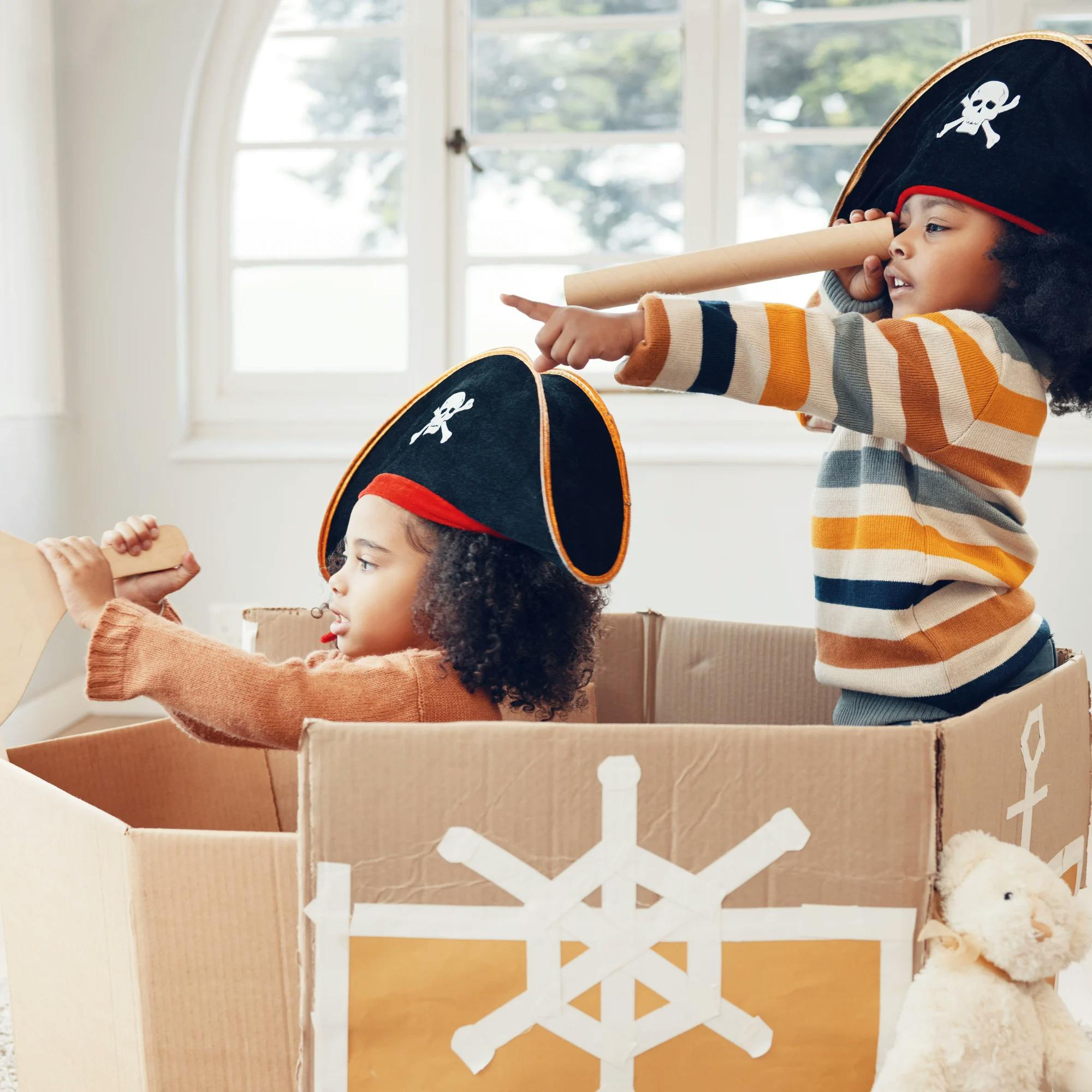
LeapFrog Scoop and Learn Ice Cream Cart Deluxe Alexis Irazoque, M.S., L/SLP, is an Expressable speech therapist with a baby and toddler at home. She loves this ice cream cart for encouraging speech and language development, but she notes that any toy food is great for pretend play!
Toy foods offer many opportunities for language development. You can work on:
Following directions, such as the steps to make a meal
Turn-taking, such as each taking a bite of the food
Asking and answering questions
Pretending to cook, eat, and feed others
Puppets are another fantastic pretend play tool that support early speech and language development. As the creator of the Muppets, Jim Henson, once said, “One of the nicest things about puppets is that it's your own hand in there. You can make it do anything you want.” Playing with puppets encourages toddlers to imitate sounds, learn new words, and practice back-and-forth interaction.
You can sing songs with the puppet, practice “open” and “close” with its mouth, have your child point to body parts (eyes, ears, mouth), or use the puppet to tell a story. Puppets are also easy travel companions during the holiday season.

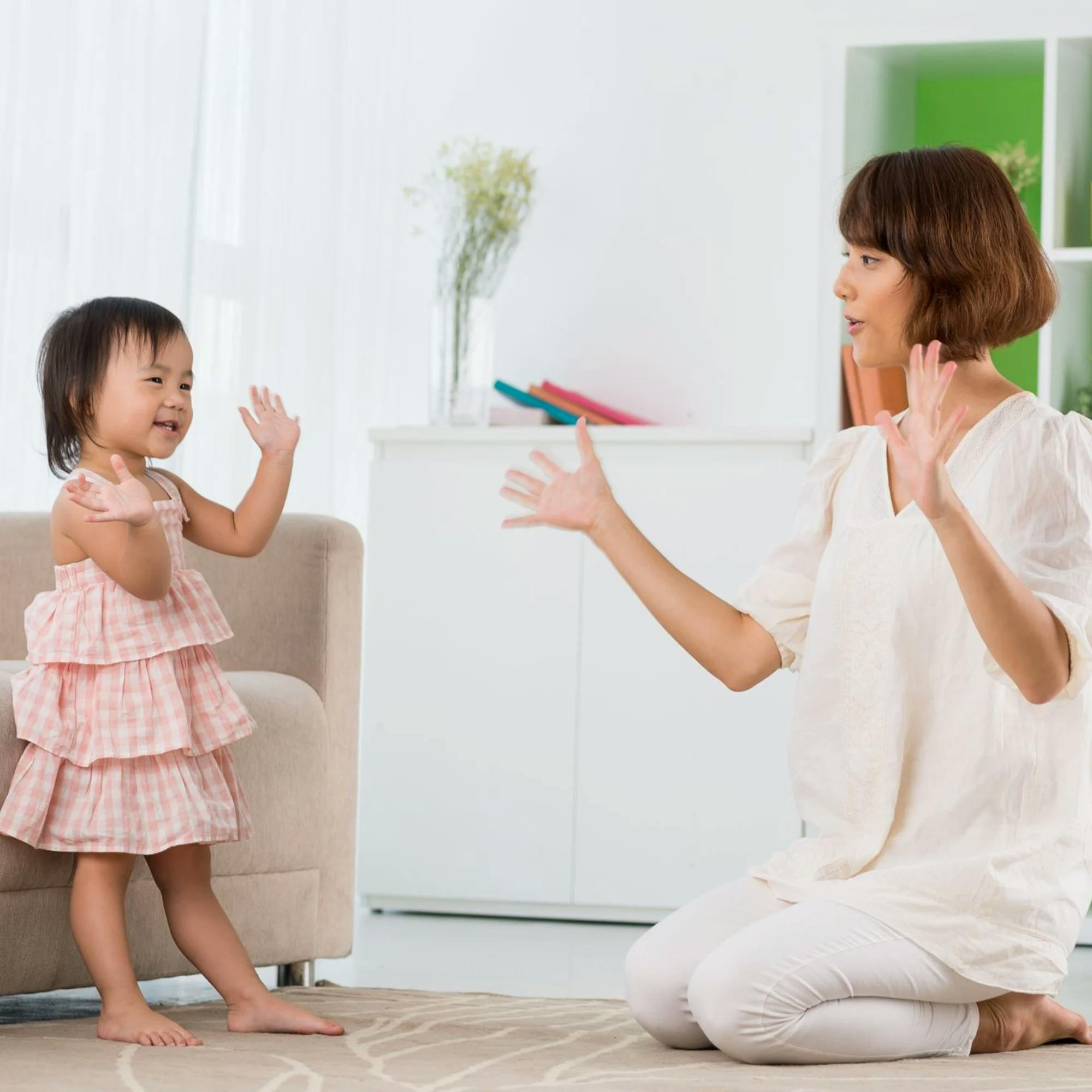
Puppets (and the other pretend play toys listed in this article) can help your child practice skills like:
Conversational exchanges (your puppet talks, then theirs talks)
Listening skills
Emotional development, using the puppet’s face to show feelings
Vocabulary development through repeated exposure to words
Confidence-building during independent puppet play
Storytelling with simple sequences and events
…and so much more!
Pretend kitchen set A pretend kitchen set is another phenomenal tool for encouraging pretend play and early language skills. You can use it to support following directions, taking turns, making requests, asking questions, and exploring daily routines.
A kitchen is full of words to learn–not only the names of foods and utensils, but also opposites like hot vs. cold, on vs. off, and sweet vs. salty. It’s also a great place to practice sequencing (like the steps for making a sandwich) and imaginative routines like working in a restaurant.
Try inviting your child to make you a hot drink. When they hand it to you, you can respond, “Ouch! Too hot. Let’s make it cooler,” and blow on it together. You can also work on simple directions, such as:
“Wash the dishes.”
“Wash your hands.”
“Pour the water.”
“Cut the food.”

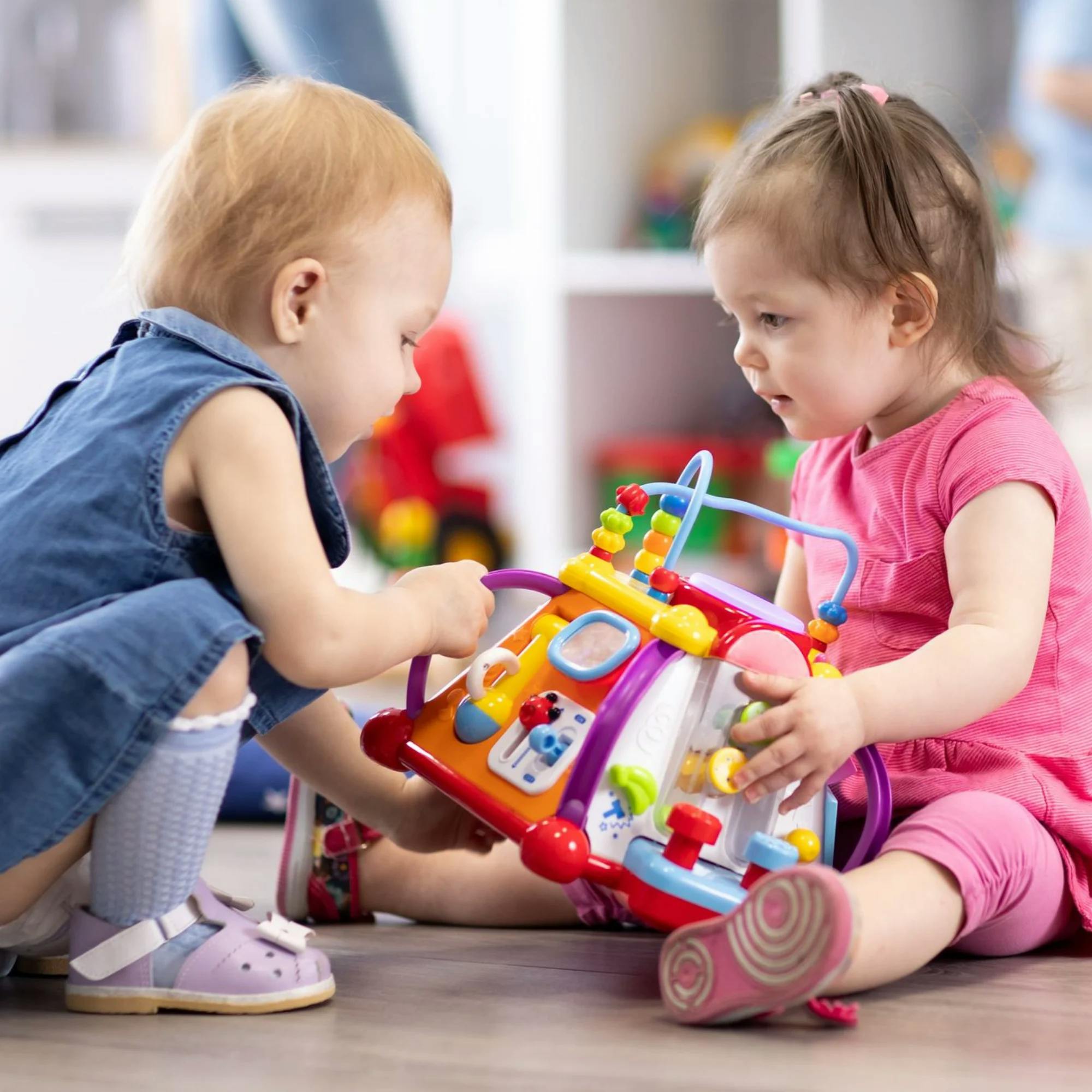
Car and truck toys to help toddlers with speech skills
Car and truck toys are great for speech and language development. That’s because they naturally invite toddlers to practice sounds, action words, simple phrases, and back-and-forth play.
Vehicle toys are especially helpful for toddlers with speech delays because they encourage vocalizing, cause-and-effect learning, and early vocabulary, which are all building blocks for learning to talk. Check these out:
Coogam Wooden Race Track Car Ramp Toy Here’s a fun one for car lovers! This ramp toy is perfect for practicing cause and effect (“What happens when we add the car?”) and sequencing, which both support early speech development. You can also work on:
Vehicle noises like “vroom!” and “beep beep”
Simple and functional words such as car, wheels, go, more, up, down, mine, and please
Melissa & Doug Dump Truck This dump truck offers tons of playful language opportunities. Toddlers can pretend-play with the workers, learn parts of a whole (body parts, truck parts), and build simple routines that support talking. Try practicing:
Fun routines like “Stack, stack, stack… oh no! It fell down!”
Phrases and concepts: in/out, on top, on the side, front/back, dump out, ready-set-go, fast/slow, open/closed
Battat Shape-Sorting Toy Garage Push the button and watch the car zoom out! Irazoque likes this toy for teaching cause and effect, an early cognitive skill that lays the foundation for language development. You can also work on:
Concepts like in/out and open/close
All those fun vehicle sounds: “boom,” “beep,” “crash,” “vroom”
Watch this quick video from Expressable speech therapist Brenna Pawelkowski, M.S., CCC-SLP, as she demonstrates some fun ways to build language while playing with cars!
What other toys can help toddlers talk and develop language?
Is Grandma still looking for some gift ideas? Send her these!
Melissa & Doug Reusable Sticker Pad Sticker books naturally support vocabulary growth and following directions. You can tell your child where to place a sticker, and teach describing words (big, small, fuzzy, striped) and location concepts (above, under, next to). Bonus: These books are portable and great for long car or plane trips! Pound a Ball Toy This is just one among many brands that make this kind of cause-and-effect toy. The child hits the ball with a hammer, then sees the effect of the ball dropping through the tube/slide.
This toy also teaches how to use a "tool" to do a routine task: putting the ball in the hole, hitting it with the hammer, watching it make its way down to the door, then getting the ball and starting over. Play activities like this help children learn how to use other objects during daily routines, such as eating with utensils and brushing teeth with a toothbrush.
Fisher-Price See 'n Say The Farmer Says Moo! Baaa! See ’n Say toys are wonderful for early language development because animal sounds often come before real words. Practicing these sounds helps toddlers learn how to imitate, which is an important step toward talking.
Edushape Stack & Drop Tower Toys like this one, which include a ball tower or stacking cups, are perfect for practicing turn-taking (a key social skill for language development). You can also work on early phrases such as ready, set, go and up/down while playing together.
Melissa & Doug Latches Wooden Activity Board Lots of kids love door-latch puzzles! They’re great for labeling items, making sounds, making requests, and, as with many of the other toys on this list, practicing core words such as in, out, open, and close.
Mr. and Mrs. Potato Head This classic toy isn’t just nostalgic—it’s also a fantastic tool for teaching toddlers how to label body parts, clothing items, pronouns, and everyday vocabulary. As you build the character, you can narrate your actions: “I’m putting on his shirt,” or “Let’s find his hat,” to model language and functional life skills.
To practice following directions, try giving simple commands like, “Put on her mouth,” or “Give him his shoes.” You can also model body-part labeling by pointing to the Potato Head’s nose and saying, “Look at his nose!” before asking your child to imitate: “Can you point to his nose?"
Take a peek at some other ways to use Potato Head in this short video from Expressable speech therapist Alyssa Gilman, M.S., CCC-SLP.
Baby and toddler books that help with speech
Children's books by Tabitha Page We love these beautiful books, which are written and illustrated by a speech-language pathologist. Here’s an example: Wishy Washy: A First Words and Colors Book features strategically chosen words that include a child's earliest developing sounds, such as /m/, /b/, and /p/. The book also includes guidance on how to promote your child's speech and language development as they grow. First Words, Animals, and Colors and First 100 Words: A Padded Board Book by Roger Priddy Speech therapists recommend books like these because they use real pictures, not cartoons, which help teach vocabulary and picture identification. It's important to remember that repetition is key. You’ll need to point to and name the picture many times before your child starts to imitate you. Then you can move to identification, asking your child, ”Where's the ______?”

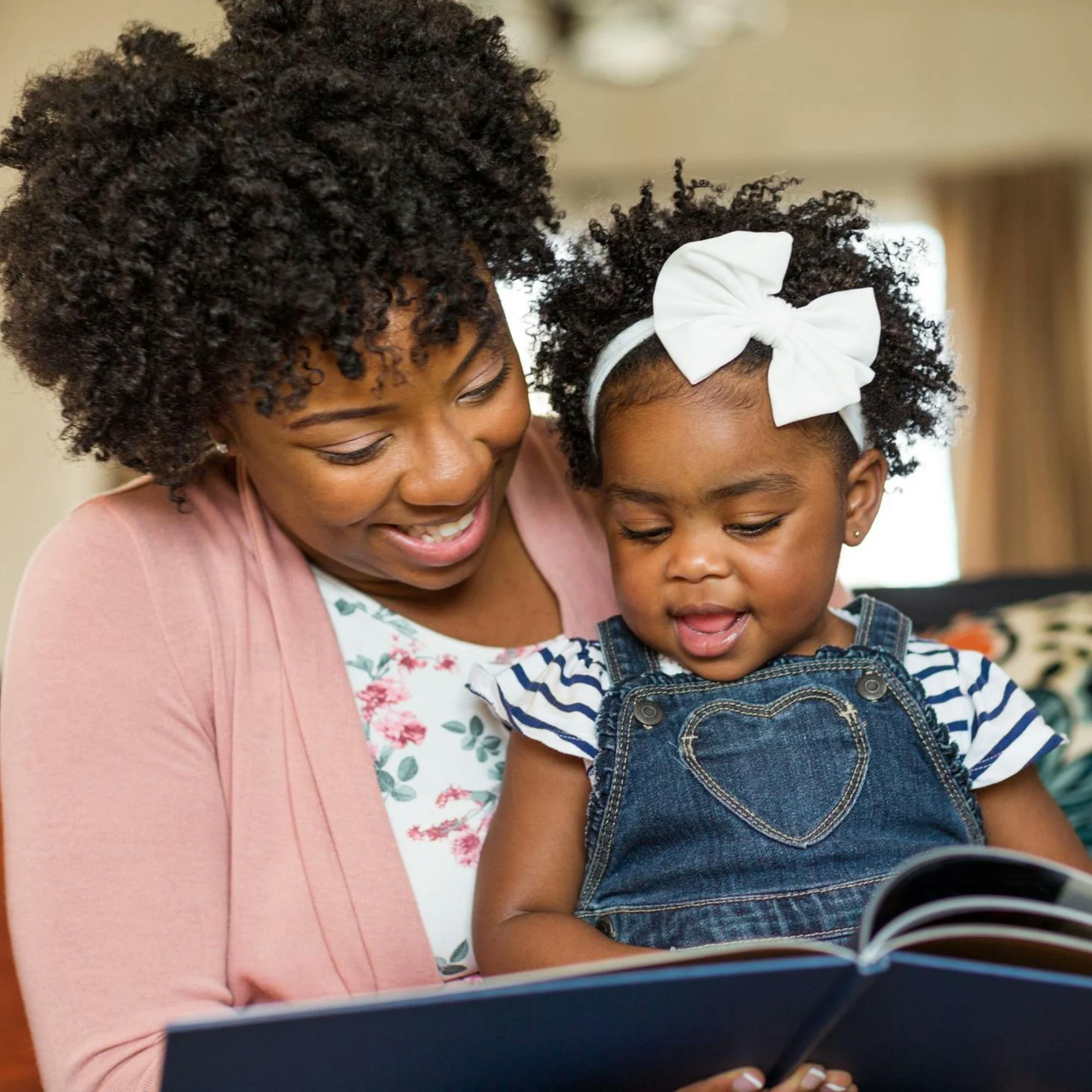
Baby Faces by DK This engaging book is a big hit because toddlers naturally love looking at other babies. It’s also ideal for practicing early words, gestures, and following directions. As you look at each picture together, model a word or action, have your child imitate, and then practice simple directions: kiss the baby, pat the baby, high-five the baby, tickle the baby, and more.
Poke-a-Dot: Old MacDonald's Farm by Melissa & Doug Irazoque loves Poke-a-Dot books for building early language because they offer so many chances for repetition. With multiple “poppers” on each page, kids get repeated opportunities to practice animal names, animal sounds, turn-taking skills, and fun first words like pop! These predictable routines make it easier for toddlers to join in and start talking.
Help your child build language through play with Expressable
At Expressable, we know that toddlers learn to talk through simple, everyday play. That’s why our sessions are child-led and play-based. Not only will your child’s speech therapist teach new communication skills, you’ll learn how to support and play with your child at home between sessions. Because the more practice toddlers get with the people they love most, the faster their progress can be.
You’ll also get access to our comprehensive online learning portal, filled with video lessons and activity ideas you can use with the toys already in your home.
If you’re wondering if your child’s speech development is on track, take our free online screener. Questions are tailored by age, and you’ll get personalized results that show whether an evaluation is recommended.
Frequently asked questions
What toys help toddlers learn to talk?
Toys that encourage imitation, turn-taking, cause-and-effect play, and simple routines help toddlers learn to talk. Examples include cars and trucks, pretend food, puppets, and toys that encourage sounds or simple phrases.
Do toys really help with speech delays?
Yes. Toys that promote interaction, vocabulary, and imitation can help a child with a speech delay. They create natural opportunities for your child to practice communication skills in a low-pressure, playful way.
How do I use toys to build my toddler’s language skills?
Narrate what you're doing, repeat words often, model simple phrases, and follow your child’s lead. Language grows best during shared play where your child feels connected and engaged.
Are electronic toys good for speech development?
Some electronic toys can be fun, but research shows that toddlers learn language best through people, not screens or buttons. Non-electronic toys that can be played with in a variety of ways (like stacking blocks) often lead to more talking and interaction.
What should I do if my child isn’t talking yet?
If you’re concerned about your toddler’s speech, consider reaching out to a speech-language pathologist, also known as a speech therapist. You can also take our free online screener to see if your child is on track. Early support can help your child build communication skills through everyday routines and play.
Key takeaways
The best toys for speech development promote back-and-forth play, imitation, and vocabulary building.
Pretend-play toys, cars and trucks, flashcards, puppets, books, and simple cause-and-effect toys all support early language growth.
Everyday routines, such as feeding pretend food, stacking blocks, reading books, and making animal sounds, are powerful ways to help toddlers learn to talk, including those with speech delays.
If your child needs extra support, a speech therapist can show you how to use toys and play to practice early communication skills at home.
How Expressable Can Help
Concerned your child isn't reaching age-expected milestones? Looking for communication support from a professional? Expressable is a national online speech therapy practice serving children and adults. We treat all major areas of communication and feeding, offer flexible hours including evenings and weekends, and accept most major health insurance plans. We’re proud to have earned more than 3,000 5-star reviews from our clients (4.9/5 average).
Our therapy model is centered on parent and caregiver involvement. Research proves that empowering caregivers to participate in their loved one’s therapy leads to better outcomes. That’s why we combine live, 1-on-1 speech therapy with personalized education and home practice activities for faster progress.
Communication is more than words. It’s how we share how we feel and show who we are. We’re here to help you or your child do just that.

 Abby Barnes, M.S., CCC-SLP
Abby Barnes, M.S., CCC-SLP
